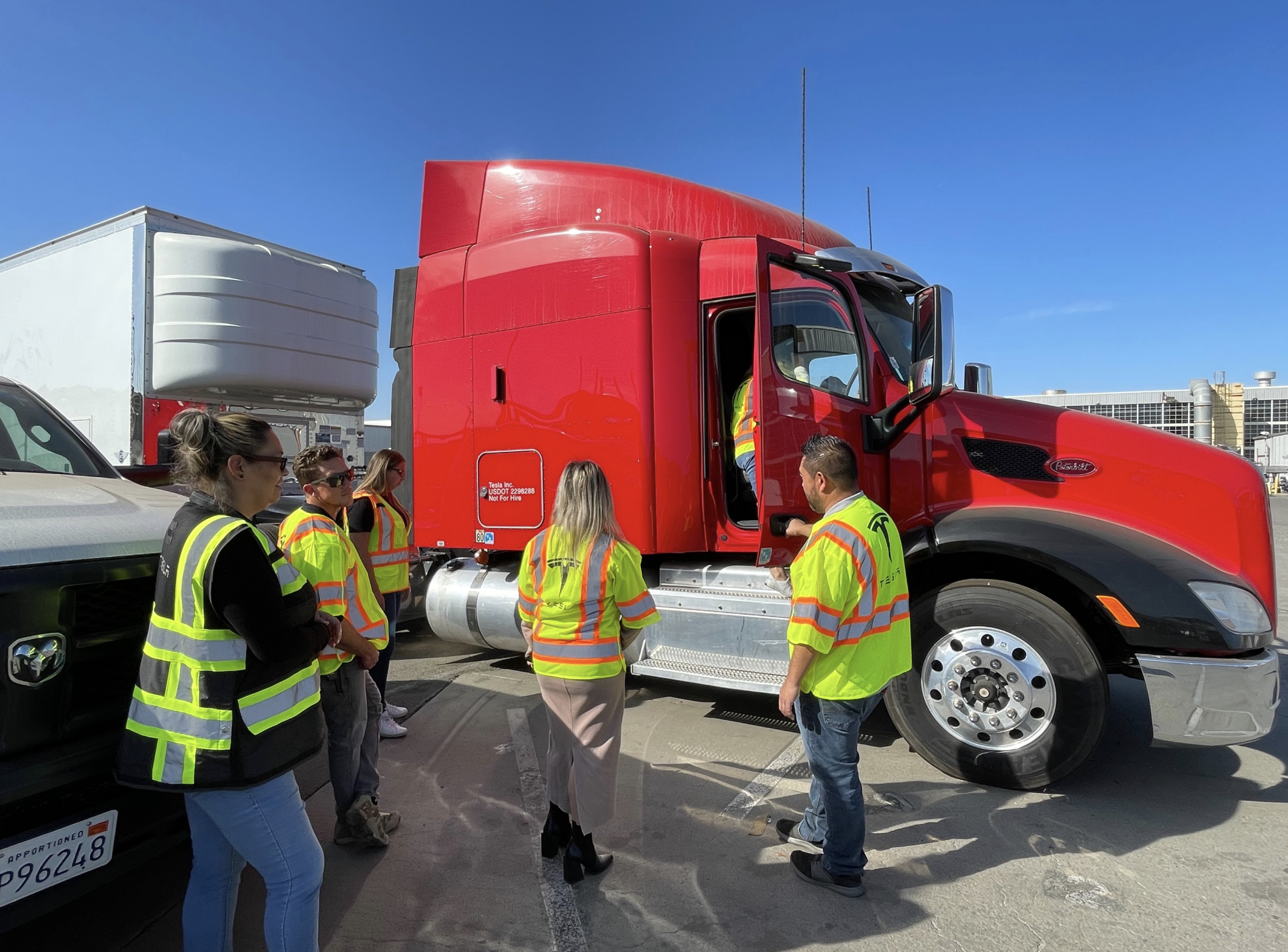Tesla Fleet Management
Tesla's fleet management platform enables showroom and service managers to quickly request vehicles, assign drivers, or reassign vehicle to a different location.
About Project
My Role
Design LEad
Time Frame
12 months + support
Team
2 Product Designer
Frontend Eng Team
Backend Eng Team
3 Product Managers
Context
Tesla has both Tesla and non-Tesla vehicles; some vehicles allocated for sales distribution and others utilized internally for operations such as service, logistics, and construction.
Until 2023, much of the fleet management was reliant on Excel files, Microsoft Power apps and Microsoft Forms, causing significant challenges for scaling operations globally.
Problem
3 out of 4
service appointments
didn't have loaner cars
7 days
average wait time for showrooms to receive a new test drive car
Even though new vehicles could arrive to a showroom in 2 hours, data showed that sometimes it took up to 3 weeks to process requests, slowing down operations.
Additionally, due to the lack of visibility into the existing fleet, managers often requested new vehicles instead of reassigning, leading to increased company expenses.
Goals
Enable fleet users to manage vehicles in one place
Enable field users to assign drivers in less than 10 min
Enable field users to re-assign vehicles in less than an hour
80% of requests should be fulfilled within 72 hours
Research
Understanding As-Is flow
It was important not to jump straight into design; instead, I helped designers organize and conduct user research to better understand the current processes and pain points of key stakeholders, including fleet managers and service operations leads.
To better understand the current process designers conducted interviews with current fleet managers and service ops leads. It helped us to better understand their day-to-day problems and user flows.
We observed how showroom managers fill out a form and share their questions and concerns about it, as some questions were duplicative and unclear
As a team, we also visited a logistics hub and interviewed fleet managers, logistics coordinators, and drivers.
Users &
Pain Points
Field Operations
Employee
Responsibilities
Check fleet capacity
Assign drivers
Request new assets when needed
Pain Points
No easy way to see how many vehicles are in use and are on order
Process of requesting a new asset is manual and time consuming
No easy way to get an overview of fleet mileage, age, utilization
Fleet
Manager
Responsibilities
Manage Tesla and Non-Tesla assets
Review requests, determine asset and acquisition type
Manage purchase process with vendors
Manage asset maintenance
Pain Points
Management in Excel is extremly manual and time consuming
No easy way to overview fleet and allocate assets
No easy way to see vehicles utilization data, fuel cost and plan fleet optimization
No easy way for logistics to plan routes systematically since inventory is managed offline
Driver
Responsibilities
Operate the vehicles in the fleet
Report any incidents
Pain Points
Need to keep track of several mobile applications
No schedule overview
AS-IS Flow
Information Architecture
I put together potential information architecture for the tool, which helped the team align on the scope and see what is coming
Success
Metrics
For different users success will look differently.
Field users should be able to request a vehicle in less than 10 min.
Fleet Managers should be able to fulfill request within 2 days.
They should be able to assign driver to the vehicle in less than 3 minutes.
Drivers should see their schedule
Wireframes
& Concepts
For this project, it was critical to define wireframes first to establish a clear vision and direction. These wireframes were shared with stakeholders and leaders from impacted teams, including logistics, service, and finance, to ensure alignment across multiple organizations. The insights from these discussions were instrumental in prioritizing features and allowed the team to confidently move forward with high-fidelity designs.
Designs
We couldn't implement everything at once, so we prioritized functionality for phase one:
Fleet Overview
Vehicle Details (General Information, Registration, Documents)
Drivers Management
Iterations
As in any project we learn some things while designing and iterating. As an example on fleet management project we had many iterations on the request flow.
Users may request more than 10 vehicles at a time:
While initially, we assumed users typically requested 3-5 vehicles based on information from showrooms and service centers, it later became apparent that users may request more than 10 vehicles at a time.
It changed our Request Details page as it wasn’t scalable for a large number of vehicles.
Drivers Management & Reports
Drivers management was one of the main functionalities we needed to deliver in Phase I, as it helps to identify unassigned vehicles.
Request Form
The centralized request center makes it easy for field users to submit requests, while fleet managers can quickly view recent requests and their statuses.
Despite the long request form, we simplified the process by breaking it into steps, guiding users through each one smoothly.
What Value Did We Delivered?
Fleet Management Platform was released across North America services and showrooms
Mobile App for Drivers
While Tesla already has a Tesla app for drivers, we needed a version for Non-Tesla too.
The app covered main users needs like:
check in to a vehicles
review all documents
see assigned tickets
We released the first version in January 2024 and have been rapidly iterating to improve efficiency and add functionality




















